As a BetterHelp affiliate, we receive compensation from BetterHelp if you purchase products or services through the links provided
We all experience stress, but have you ever wondered about the different types of stress and how they might impact you? When it comes to internal stress, it’s important to understand where it comes from and how it might affect your overall well-being. Internal stress refers to the feelings and thoughts that arise from one’s psychological mindset or expectations, such as putting pressure on yourself to be perfect or fear of public speaking. In more serious cases, internal stress can even lead to feelings of depression and anxiety.
While some stress can be healthy and help us stay alert and focused, prolonged internal stress can negatively affect our mental and physical health. This is because stress triggers the body’s fight or flight response, causing various physical symptoms and, in some cases, leading to stress-related illnesses. Managing and coping with internal stress is crucial for maintaining a healthy, balanced life. By understanding the root causes of internal stress and finding effective ways to manage it, you can safeguard your overall well-being.
Key Takeaways
- Internal stress stems from psychological mindset and personal expectations
- Prolonged internal stress can negatively impact both mental and physical health
- Learning to manage internal stress is essential for maintaining overall well-being

Understanding Internal and External Stress
Causes of Internal Stress
Internal stress originates from your thoughts and feelings, often due to unresolved psychological issues or negative self-talk. Some common causes of internal stress include:
- Unrealistic expectations
- Perfectionism
- Negative self-image
- Fear of failure
Often, internal stressors can stem from your psychological mindset or anticipations. They can also lead to feelings of depression or anxiety if not addressed.
Impacts of External Stress
External stress, on the other hand, arises from events or situations occurring in your environment. These stressors can be related to work, relationships, financial issues, or major life changes. Some examples of external stressors are:
- Deadlines at work
- Conflict in personal relationships
- Financial difficulties
- Health issues or accidents
The impacts of external stress can be both positive and negative. For instance, a small amount of stress can motivate you to perform well, but it may lead to physical and mental health problems when it becomes excessive.
As you navigate through life, it’s essential to recognize the sources of your stress and learn to manage them effectively. By addressing both internal and external stressors, you can lead a more balanced and fulfilling life. One key takeaway is to remember that evaluating whether your stressors are primarily internal or external can provide valuable insights into developing better stress control strategies.

Effects of Stress on Physical Health
Stress can seriously affect your body, especially if it goes unchecked. When you’re under pressure, your body may produce symptoms that may seem unrelated, but they’re warning signs that it’s time to pay attention. Here’s a rundown of some common effects stress can have on your physical health:
- Headaches: Stress is one of the main triggers for tension headaches and migraines. If headaches constantly plague you, it might indicate you’re dealing with too much stress.
- Pain: Stress can cause or exacerbate muscle tension, leading to pain in your neck, shoulders, and back. It’s not uncommon for people to carry stress in these areas, making it essential to find healthy ways to cope with and alleviate that tension.
- High blood pressure: Chronic stress has been linked to high blood pressure, which can increase your risk for heart attack, stroke, and heart disease. If you’re constantly feeling stressed, finding effective ways to manage it and protect your heart health is crucial.
- Chest pain and heart issues: Stress can contribute to heart problems, such as chest pain, heart palpitations or rapid heartbeat. Chronic stress is also associated with an increased risk of developing heart disease.
- Digestive problems: Your gut can be sensitive to stress, leading to nausea, diarrhea, or other digestive problems. Maintaining a balanced diet and managing stress can help keep your stomach calm.
Remember to listen to your body and recognize when it’s trying to tell you that something needs to change. By addressing the effects of stress on your physical health, you’re on track to create a happier, healthier you.
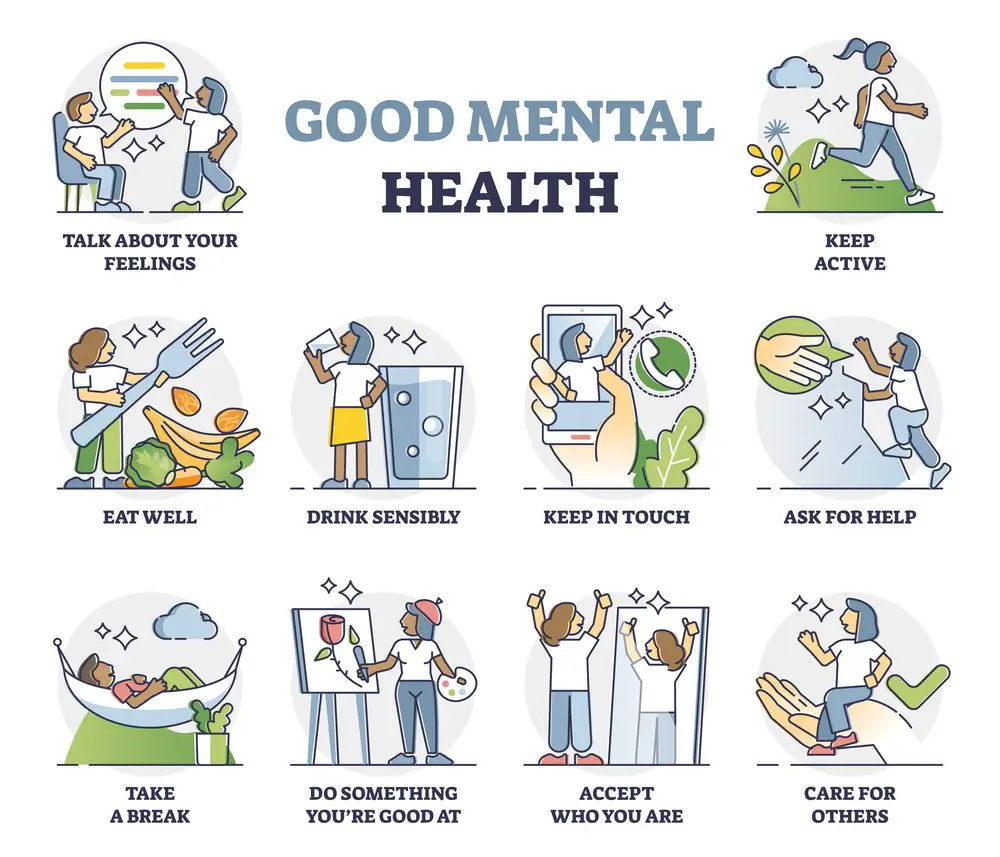
Effects of Stress on Mental Health
Experiencing internal stress can have a significant impact on your mental health. When you constantly feel stressed, it can trigger a range of emotions and have various negative effects.
- Anxiety: Internal stress can increase your likelihood of experiencing anxiety. With prolonged stress, you may constantly worry and feel uneasy about various aspects of your life.
- Depression and sadness: Stress often contributes to feelings of depression and sadness. When stress is not addressed properly, it can lead to feelings of hopelessness and helplessness, which can be detrimental to your mental health.
- Mood, anger, and irritability: Experiencing internal stress can cause mood swings, making you more prone to feelings of anger and irritability. This may negatively affect your relationships and interactions with others.
- Negative self-talk: Stress can have a profound impact on your self-esteem. When you’re feeling overwhelmed, you might engage in negative self-talk, which only reinforces the stress and further damages your mental health.
- Feeling overwhelmed: Internal stress can cause you to feel overwhelmed, as though you’re unable to cope with the demands of daily life. This can lead to significant distress, making it even more difficult for you to function effectively.
Your body’s response to stress also includes the release of cortisol, a hormone that prepares your body for a fight or flight response. While cortisol is necessary in short-lived situations, continuous release can contribute to unhealthy outcomes, such as anxiety and depression.
To maintain your mental health, it’s essential to recognize the signs of internal stress and develop strategies to manage it effectively. Addressing your stressors head-on can create a healthier mindset and improve your overall well-being.
 Stress and Overall Well-being
Stress and Overall Well-being
Stress and Family
Family life can bring many sources of joy, but it can also significantly contribute to internal stress. Juggling a busy schedule, managing finances, and coping with uncertainties related to children or other relatives can all impact your emotional well-being. To decrease family-related stress, try setting aside dedicated time for family bonding and communication and implementing strategies for managing financial concerns.
Stress and Work
Work is a major source of internal stress for many people. Deadlines, office politics, and the pressures of meeting expectations can affect your mental well-being. It’s important to maintain a healthy work-life balance to minimize stress. Some ways to do this include:
- Prioritizing tasks and setting realistic goals
- Taking breaks during the workday
- Using your vacation days to recharge
Stress and Relationships
Relationships, both romantic and platonic, can be both rewarding and stressful. Factors such as miscommunication, differing expectations, and unresolved conflicts can contribute to internal stress. To maintain healthy relationships and decrease stress levels, work on active listening, expressing your needs, and striving for mutual respect and understanding.
Stress and Health Problems
Internal stress can negatively affect your well-being by causing or exacerbating health problems. High-stress levels can lead to issues such as:
- High blood pressure
- Heart disease
- Obesity
- Diabetes
Adopting stress management techniques, such as meditation, exercise, and seeking professional help to prevent these health problems and maintain a good quality of life is crucial. Remember, your mental well-being is just as important as your physical health.
 How to Monitor and Manage Stress
How to Monitor and Manage Stress
Recognizing Stress Symptoms
It’s essential to recognize the symptoms of stress to manage it effectively. Common stress symptoms include feeling angry, tense, worried, or irritable. Physical signs, such as headaches or an upset stomach with no medical cause, can also indicate stress. Additionally, stress may cause difficulty focusing and trouble sleeping at night.
To monitor your stress levels, consider the following:
- Identify your stress triggers: Reflect on experiences that cause stress and take note of them.
- Pay attention to physical responses: Observe changes in your body, such as an increased heart rate or muscle tension, as they may indicate an increase in stress.
- Consult a mental health professional: A therapist, doctor, or other professional can help assess your stress levels and offer guidance.
Techniques for Stress Management
Here are some techniques to help you manage stress effectively:
- Relaxation techniques: Engage in deep breathing, meditation, or progressive muscle relaxation to soothe stress and maintain focus.
- Physical activity: Exercise regularly to promote healthy cortisol levels, which can help alleviate stress.
- Time management: Prioritize tasks and break them down into smaller steps to make them more manageable.
- Coping skills: Learn techniques, such as problem-solving or goal-setting, to combat adversity and develop resilience.
- Nutrition: Eating a well-balanced diet can help your body manage stress better.
- Sleep: Ensure you get enough rest each night, as sleep is crucial for maintaining mental clarity and reducing stress.
Remember, reaching out to a mental health professional or therapist can be beneficial when dealing with stress. They can provide tools, therapy, and methods for stress relief tailored to your unique situation. Remember that stress management techniques vary from person to person, so finding what works best for you is essential.
Using Physical Activity to Combat Stress
Who doesn’t experience stress in their daily lives? It’s natural, but excessive stress can affect your mental and physical well-being. The good news is that regular physical activities can effectively alleviate stress. Let’s explore some ways you can use movement to your advantage.
Exercise: Whether it’s a quick jog, a gym workout, or a dance class, exercise releases endorphins, natural painkillers that enhance your mood and help you sleep better. As you begin to shed daily tensions through exercise, you’ll find that this focus on a single task can keep you calm, clear, and optimistic.
Yoga: Yoga is more than just physical exercise; it combines mindfulness, deep breathing, and stretching to soothe body and mind. By practicing yoga, you can enhance your flexibility, improve balance, and promote relaxation, all while reducing stress.
Tai Chi: This ancient Chinese practice combines slow and deliberate movements with deep breathing and mental focus. Tai Chi improves physical strength and balance and reduces stress and anxiety through its meditative nature.
Play: Engaging in fun, recreational activities like sports or games can provide a mental break from everyday stressors. Losing yourself in the excitement of competition or cooperation can offer a mood boost and refresh your perspective.
Remember, incorporating physical activity into your routine – exercise, yoga, tai chi, or play – can effectively combat stress and improve your overall mental well-being. Try these practices, and find the one that suits you best. After all, a healthy lifestyle is only a few steps away!
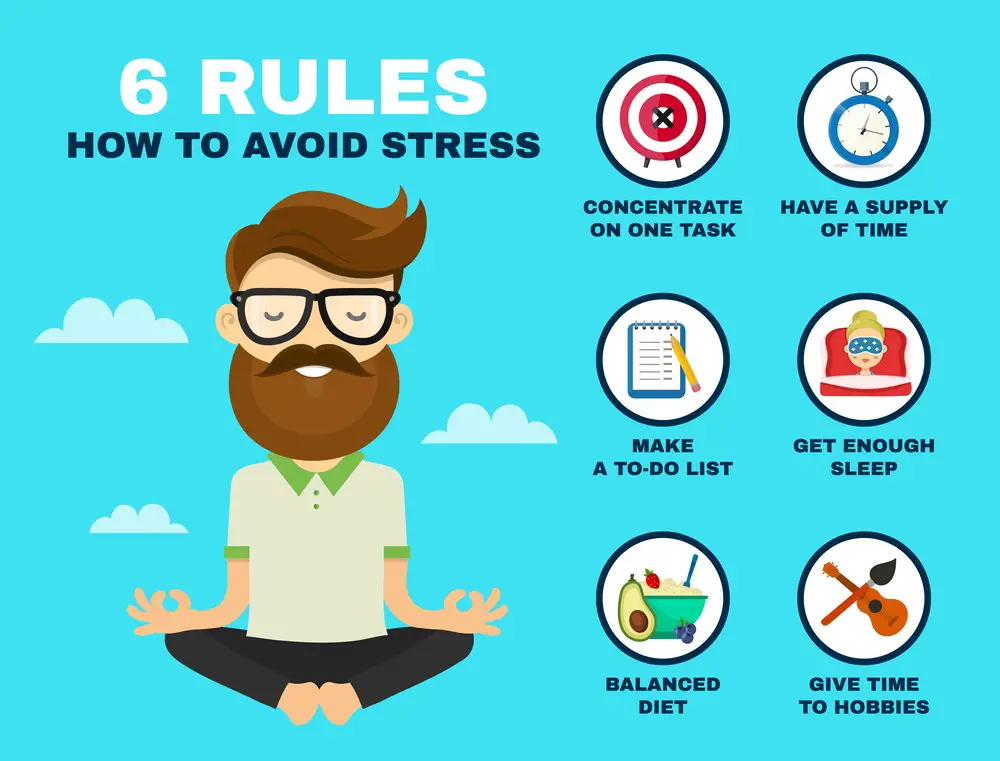
Role of Healthy Living in Stress Management
Maintaining a healthy lifestyle plays a crucial role in managing internal stress. It helps you develop resilience and better cope with the challenges you face in your daily life. Focusing on some key components can significantly reduce the negative effects of internal stress.
1. Eat a balanced diet
A nutritious and well-balanced diet is essential for keeping your body and mind healthy. Include plenty of fruits, vegetables, whole grains, lean protein, and healthy fats in your meals. A varied and balanced diet provides the necessary nutrients to function effectively and combat stress.
2. Exercise regularly
Physical activity not only benefits your body but also helps in alleviating stress. Regular exercise releases endorphins, the feel-good chemicals in your brain, which improve your mood and reduce stress levels. Aim for at least 150 minutes of moderate-intensity aerobic activity or 75 minutes of vigorous-intensity aerobic activity per week, along with muscle-strengthening exercises.
3. Get adequate sleep
Sleep is crucial for maintaining your overall health and well-being. Lack of sleep or poor-quality sleep can exacerbate internal stress and lead to various health problems. Ensure you get 7-9 hours of sleep per night and establish a consistent sleep schedule. Create a relaxing bedtime routine and eliminate distractions in your bedroom for better sleep quality.
4. Minimize alcohol and avoid drugs
Moderate alcohol consumption might seem like a quick fix for stress, but it can create a negative cycle and worsen stress in the long run. Likewise, drugs can provide temporary relief but can lead to addiction and worsen stress. Focus on developing healthy stress management techniques, such as deep breathing, meditation, or engaging in hobbies, instead of relying on alcohol or drugs.
5. Maintain social connections
Positive social interactions provide emotional support and enhance your ability to cope with internal stress. Stay connected with friends and family, participate in group activities, or join a support group to build a strong support system. Sharing your feelings and experiences with others makes you feel understood and reduces the burden of internal stress.
Incorporating these components into your daily life can help you manage internal stress effectively and improve your overall well-being. By making these healthy choices and cultivating positive habits, you’ll be better equipped to handle the challenges that come your way.
 Mindfulness and Relaxation Techniques
Mindfulness and Relaxation Techniques
In today’s fast-paced world, it’s common to experience internal stress, which can negatively affect your mental and physical well-being. Several effective mindfulness and relaxation techniques can help you manage this stress.
One highly useful practice is meditation. You can greatly reduce internal stress by setting aside a few minutes each day to focus on your breath and calmly observe your thoughts. Meditation helps you become more aware of your emotions and feelings, allowing you to maintain balance in challenging situations.
Deep breathing exercises are another powerful tool. When you find yourself overwhelmed, take a moment to close your eyes and focus on your breath. Inhale deeply through your nose, then exhale slowly through your mouth. Repeat this process several times to help your body relax, and your mind regain clarity.
Incorporating various relaxation techniques into your daily routine can also make a significant difference in managing stress. Some popular techniques include:
- Progressive muscle relaxation
- Body scan meditation
- Visualization
- Self-massage
Explore the different methods and find the ones that resonate the most with you, helping you feel more grounded and at ease.
Lastly, practicing mindfulness can be a game-changer. Mindfulness involves being present in the moment without judgment or overthinking. This can be cultivated through meditation, focused breathing, or walking in nature. By staying connected to the present moment, you can better understand your thoughts, feelings, and bodily sensations, effectively relieving internal stress.
Key takeaway: Utilizing mindfulness and relaxation techniques such as meditation, deep breathing, and various relaxation practices can help you effectively manage internal stress, promoting better mental and physical well-being.
Nurturing a Positive Mindset
A positive mindset can greatly help you manage internal stress, which includes stress-inducing thoughts or behaviors originating from your psychological mindset or expectations. Here’s how to nurture a positive mindset to handle internal stress effectively.
Set realistic expectations and goals: It’s crucial to align your expectations with achievable targets. When setting goals, ensure they are SMART – Specific, Measurable, Achievable, Relevant, and Time-bound. Doing so will create a sense of purpose without overwhelming yourself.
Focus on the positives: Instead of dwelling on setbacks and negative thoughts, focus on positive aspects of your life. Celebrate small wins, appreciate your accomplishments, and remind yourself of your strengths.
Build self-esteem: Your self-image plays a significant role in managing internal stress. Embrace your uniqueness and cultivate self-love through positive self-talk and self-compassion. Affirmations can be a powerful tool to help you build a strong foundation for self-esteem.
Practice resilience: When faced with challenges or setbacks, resilience can help you bounce back and continue moving forward. Develop coping skills, such as problem-solving, seeking social support, and engaging in relaxation techniques to foster resilience in adversity.
Curb dizziness: Dizziness can be a physical symptom of stress. Deep breathing exercises and mindfulness meditation can help calm your body and mind, alleviating dizziness and other physical symptoms of stress.
Engage in positive self-talk: Positive self-talk is a simple yet effective way to improve your mindset. Replace negative thoughts with constructive ones, and remind yourself of your abilities, strengths, and accomplishments. Journaling can also be an excellent medium for expressing emotions and reinforcing positive thoughts.
Remember, nurturing a positive mindset is an ongoing process that requires consistent effort and self-awareness. By focusing on these practices, you will be better equipped to manage internal stress and create a healthier, happier life.
 The Fight or Flight Response to Stress
The Fight or Flight Response to Stress
Have you ever wondered how your body reacts to stress? The fight-or-flight or acute stress response is your body’s built-in mechanism to help you handle stressful or dangerous situations. This physiological reaction occurs when you’re faced with a fear-inducing situation, whether mentally or physically, and it is triggered by the release of hormones that prepare your body to either stay and deal with the threat or flee to safety.
When the fight-or-flight response kicks in, your nervous system jumps into action, and your heart rate increases, pumping more blood to your muscles to help prepare you for action. This sudden boost in adrenaline helps your body respond quickly and be more resilient to the perceived threat. Here’s a brief look at some effects of this response:
- Increased heart rate: Your heart rate rises, allowing more blood flow to your muscles and other vital organs.
- Nervous system activation: The nervous system sends signals to various parts of your body to increase alertness and muscle tension for action.
- Stress hormone release: Hormones like adrenaline and cortisol are released, providing energy and helping your body deal with any potential danger.
It’s important to remember that not all stress is harmful. The fight-or-flight response has evolved as a survival mechanism, enabling people and other mammals to react quickly to life-threatening situations. This response can be helpful in short-term situations where you must act quickly. Still, when stress becomes chronic, it can lead to various health issues such as high blood pressure, anxiety, and the formation of artery-clogging deposits.
So, the next time you feel your heart race when facing a stressful situation, know that it’s your body’s natural way of preparing your mind and muscles for action. By understanding this response, you can learn to manage stress better and keep your body healthy in the face of challenges.
 Understanding and Practice of Stress Relief
Understanding and Practice of Stress Relief
Creativity and Diversion for Stress Relief
Engaging in creative activities and finding enjoyable diversions can help you relieve stress effectively. Here are some ideas:
- Music: Listening to or playing music can have a relaxing effect on your mind and body. Choose calming tunes or play an instrument to let your emotions flow.
- Arts and crafts: Express your emotions through painting, drawing, or other art forms. Let your creativity be a channel to let go of unwanted stress.
- Fun and laughter: Humor is a natural stress reliever. Watch funny videos, attend comedy shows, or share jokes with friends. Laughing helps release endorphins, easing stress and anxiety.
- Breathing exercises: Deep breathing helps to calm your mind and alleviate tension. Practice slow and steady breaths to relax and refocus your thoughts.
Stress Relief through Social Aspects
Connecting with others plays a crucial role in stress management. Here’s how you can utilize your social circle to improve your well-being:
- Supportive friends and family: Surround yourself with people who provide emotional support and encouragement. Share your thoughts and feelings openly, allowing them to help you navigate challenging situations.
- Join clubs or groups: Participate in social activities that you enjoy, such as book clubs, dance classes, or group workouts. These gatherings can foster positive connections and distract you from stressors.
- Volunteer: Devoting your time to helping others can bring happiness, satisfaction, and a sense of purpose. Volunteering is a great way to build strong relationships while positively impacting your community.
- Flexibility in relationships: Accept and embrace different perspectives, values, and behaviors in your social life. Being open to change and diversity can help lessen conflicts and stress.
Remember, indulging in creative hobbies, fostering positive social connections, and practicing relaxation techniques can significantly improve your ability to combat stress. Make it a habit to incorporate these stress-relief methods into your daily life for a healthier and happier you.
 Signs That Internal Stress is Out of Control and Therapy is Needed
Signs That Internal Stress is Out of Control and Therapy is Needed
Recognizing when your internal stress has escalated beyond manageable is crucial for taking timely action. Sometimes, internal stress can be so overpowering that it interferes with your daily life and well-being. When that happens, seeking professional help in the form of therapy can be incredibly beneficial.
Warning Signs
Here are some indicators that your stress level might be reaching a breaking point:
- Persistent Anxiety or Panic Attacks: If your anxious thoughts are paralyzing you or leading to panic attacks, it’s time to consider therapy.
- Sleep Issues: Whether it’s insomnia or hypersomnia (excessive sleeping), dramatic changes in your sleep patterns can be a red flag.
- Physical Symptoms: Unexplained headaches, stomach issues, or body pains may be your body’s way of telling you something’s wrong.
- Social Withdrawal: If you’re avoiding friends, family, and social events, stress could be to blame.
- Depressive Symptoms: Feelings of overwhelming sadness, despair, or loss of interest in activities are signs that you need help.
- Performance Decline: If you see a drastic drop in your performance at work or in personal activities, it might be stress-related.
If you notice any combination of these symptoms persisting over time, it’s a strong signal that professional guidance is required.

Setting Goals for Therapy
Setting clear goals is the next step once you’ve decided to seek therapy. This ensures that you and your therapist have a concrete understanding of what you hope to achieve.
- Stress Identification: Understand the sources of your internal stress.
- Coping Mechanisms: Learn healthy ways to cope with stress and anxiety.
- Improvement Metrics: Set benchmarks for assessing your progress, such as reduced anxiety levels or better sleep quality.
Recognizing Progress
Therapy is a journey, and it’s important to acknowledge the strides you make along the way. Here’s how you can recognize progress:
- Reduced Symptoms: Fewer sleepless nights or panic attacks are good signs.
- Enhanced Mood: Feeling happier and more content indicates that you’re moving in the right direction.
- Improved Relationships: If your social life improves, it’s a positive sign.
- Greater Productivity: Focusing and accomplishing tasks more effectively is another hallmark of progress.
Remember, the road to managing internal stress is not a sprint; it’s a marathon. Celebrate small victories and stay committed to your therapy goals. Doing so means you’re on your way to a healthier, more balanced life.
Frequently Asked Questions

What causes internal stress symptoms?
Your thoughts, emotions, and behaviors cause internal stress symptoms. These can be triggered by unrealistic expectations, self-imposed pressure to be perfect, or fear of failure.
Key takeaway: Be aware of your thoughts and emotions, which can contribute to internal stress.
How are internal stressors different from external ones?
Internal stressors come from within, such as your thoughts, feelings, and beliefs. External stressors are events or situations outside your control, like work deadlines or financial problems. Key takeaway: Recognize the difference between internal and external stressors to better manage stress levels.
Can you provide some examples of common internal stressors?
- Perfectionism
- Negative self-talk
- Fear of failure
- Fear of public speaking
- Worrying about the future
Key takeaway: Identifying your internal stressors is the first step in learning how to cope with them effectively.
What is the difference between internal and external stressors?
Internal stressors are self-generated, while external factors cause external stressors. Internal stressors often involve your thoughts and attitudes, while external stressors involve situations and events you have limited control over. Key takeaway: Understanding the difference can help you tailor stress management techniques to target specific stressors.
How can internal stress impact mental health?
When left unmanaged, internal stress can lead to feelings of anxiety and depression and can adversely impact your daily activities. Chronic internal stress can also lead to burnout and decreased overall well-being. Key takeaway: It’s important to find healthy ways to cope with internal stress to maintain mental health.
What are some effective ways to manage internal stress?
- Practicing mindfulness and meditation
- Challenging negative thoughts
- Setting realistic expectations
- Prioritizing self-care
- Seeking support from friends, family, or a mental health professional
Key takeaway: Find the best strategies for you and incorporate them into your daily routine to help manage internal stress.
About Jacob Maslow
After surviving the traumatizing events of 9/11, I took it upon myself to heal through helping others. I’m the primary caregiver of my children and understand from first-hand experience the lonely paths you have to walk as a partner and parent when leaving an unhealthy relationship.
We’re all echoing in a dark space that doesn’t have to be this empty, and that’s been my mission since finding solace and recovery in therapy: To help comfort others who are still in shock and at the prime of their struggle.
I came across BetterHelp after searching for this type of community. I wanted to belong to a body of proactive therapists and supportive therapy veterans that allowed me to see other sides of the story.
It was unconventional, and that’s what attracted me most. During my most challenging times, when my ex-wife completely cut me off from my children, I found comfort and clarity through BetterHelp.
Instead of being chained to a strict therapist recommendation, I was in charge of who I felt understood my struggle most. That allowed me to find my true peace, as I was reunited with those who read behind my words and had first-hand experience with my trauma.
Recovery is a choice; with BetterHelp, that choice will be a few clicks away. You can join their couples-oriented platform, Regain.us for those stuck with family estrangement and toxic relationship patterns.
- 7 Ideas to Help You Relax and Unwind on a Family Vacation - April 27, 2025
- How Having Cybersecurity Protection Helps You Relax - April 25, 2025
- 8 Reasons Why Spending Time Outside Calms You Down - April 25, 2025
This site contains affiliate links to products. We will receive a commission for purchases made through these links.


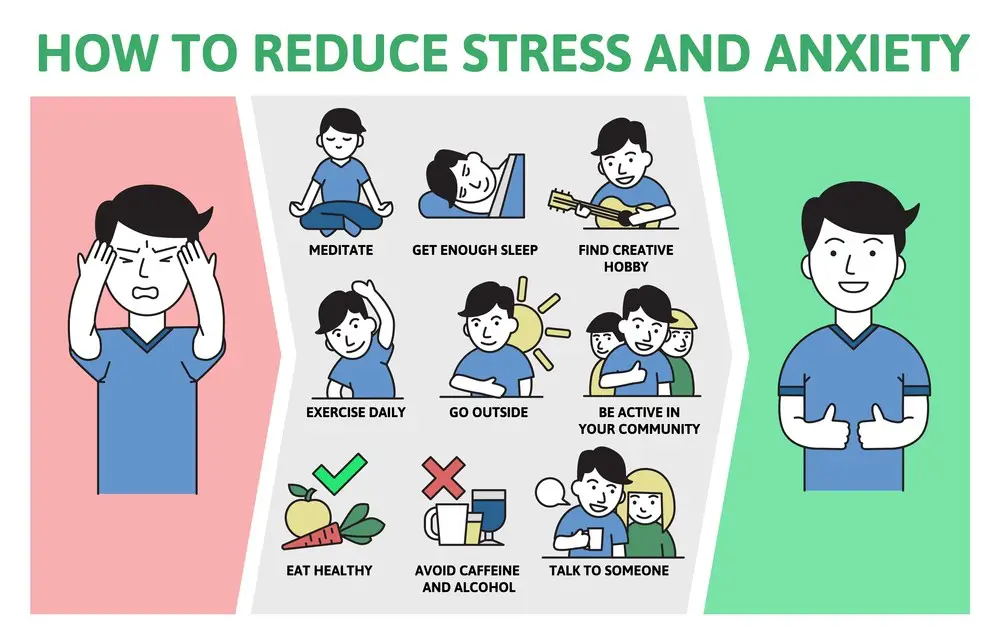 Stress and Overall Well-being
Stress and Overall Well-being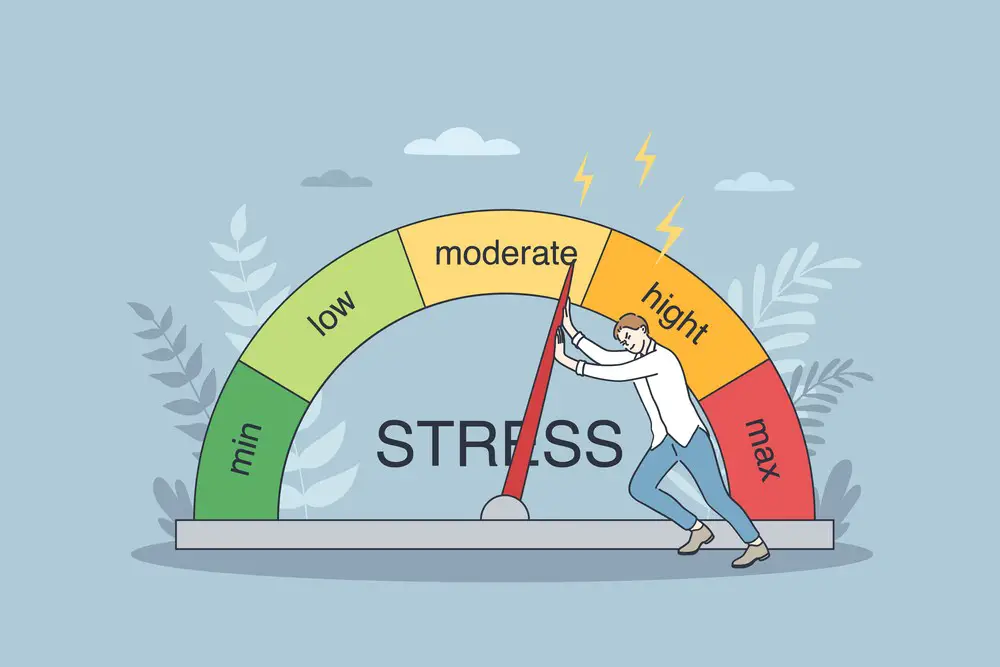 How to Monitor and Manage Stress
How to Monitor and Manage Stress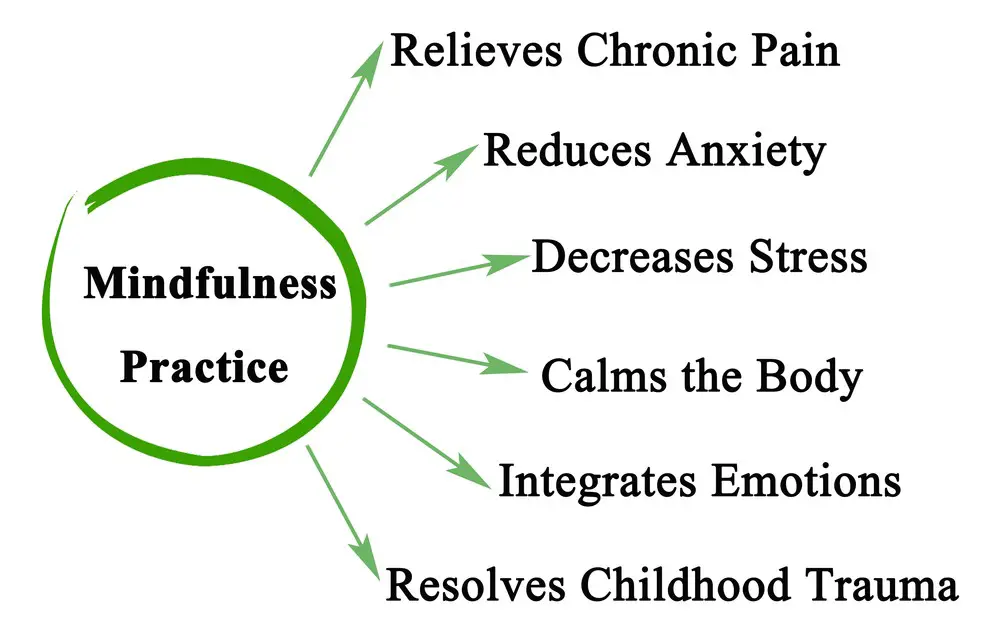 Mindfulness and Relaxation Techniques
Mindfulness and Relaxation Techniques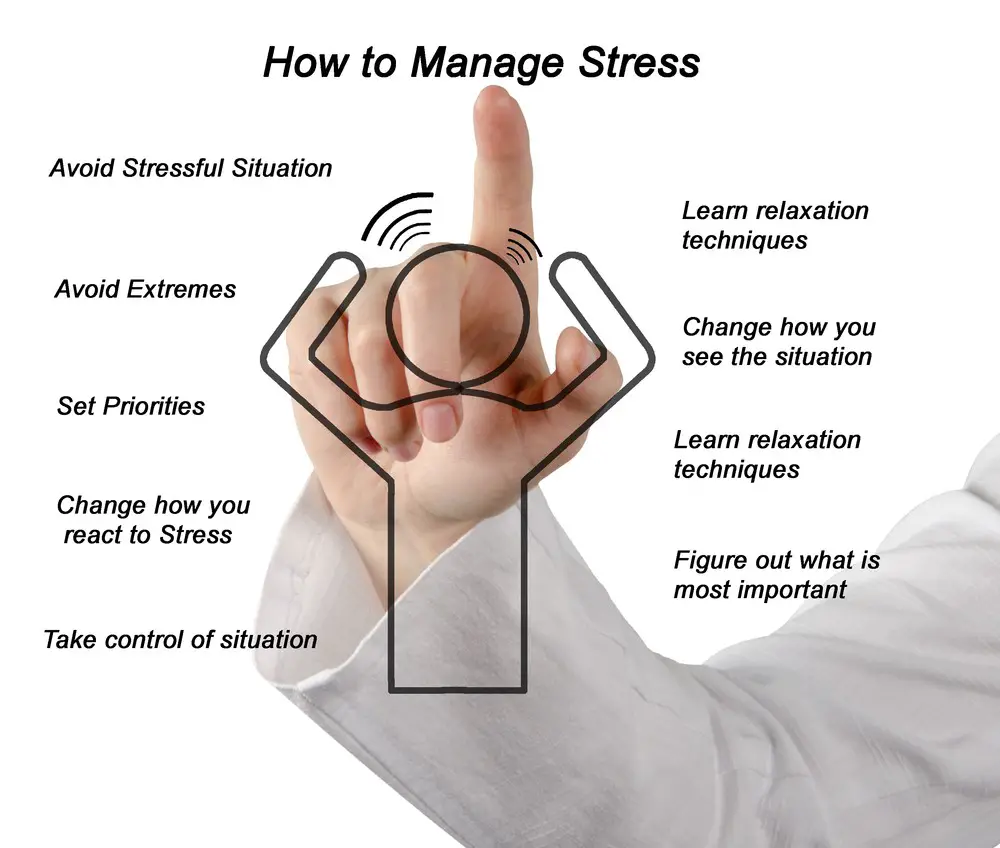 The Fight or Flight Response to Stress
The Fight or Flight Response to Stress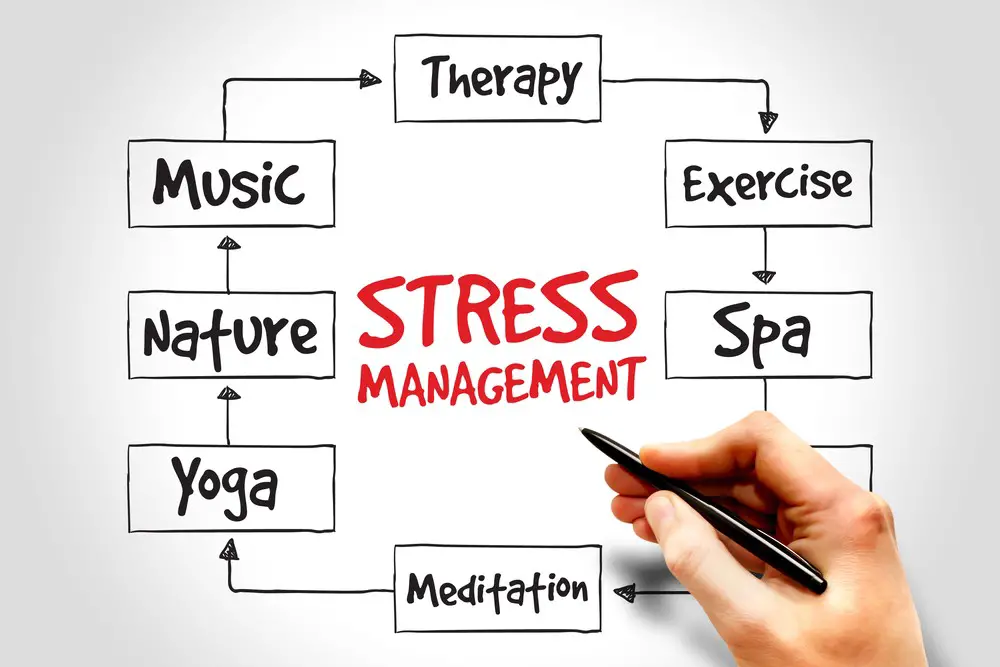 Understanding and Practice of Stress Relief
Understanding and Practice of Stress Relief Signs That Internal Stress is Out of Control and Therapy is Needed
Signs That Internal Stress is Out of Control and Therapy is Needed
